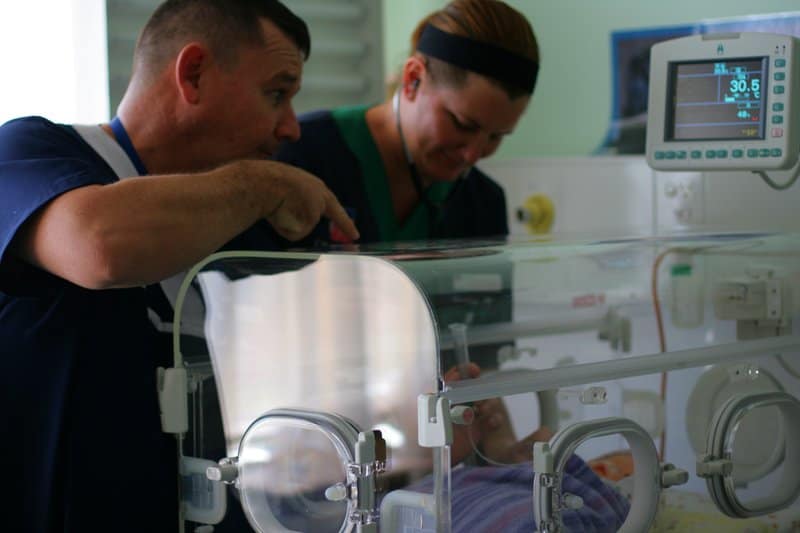February 24, 2017

A weekly roundup of news on drug resistance and other topics in global health.
Recommendations for cancer control in low- and middle- income countries: In Cancer Control 2016, CDDEP Associate Director for Policy Hellen Gelband and colleagues report on effective, cost-effective, feasible and affordable measures for cancer control in low- and middle-income countries. The recommendations come from Disease Control Priorities, Third Edition (DCP3). Cancer, Volume 3 of the DCP3, provides guidance for low- and middle-income countries to meet the United Nations Sustainable Development Goals through expanding cancer control as a part of universal healthcare. [DCP3 Volume 3, Cancer Control 2016]
EU nations report rising antimicrobial resistance, particularly in Salmonella. A report from the European Centre for Disease Prevention and Control (ECDC) and the European Food Safety Authority (EFSA) finds high rates of antimicrobial resistance in 28 EU member states based in data on antimicrobial resistant zoonotic and indicator bacteria. While the report shows high multidrug resistance to Salmonella, resistance to critically important antimicrobials used in severe human cases remains low. The report notes that antimicrobial resistance levels vary across Europe by geographic region, with generally higher levels in Southern and Eastern Europe. [ECDC report, CIDRAP]
Risk-based calculator predicts neonatal sepsis risk; could halve antibiotic use in newborns. A risk calculator, available online, developed by researchers at Kaiser Permanente, the University of Pennsylvania, and the University of California, San Francisco could significantly reduce the use of empirical antibiotics in cases of early onset sepsis, a serious bacterial infection in newborns. Characteristics factored into the calculations include gestational age, time from membrane rupture, maternal temperature, group B Streptococcus (GBS) carriage status, intrapartum antibiotic use, and the newborn’s clinical presentation. The results are published in JAMA Pediatrics. The Center for Infectious Disease Research and Policy (CIDRAP) reports that roughly 15 percent of newborns are evaluated for sepsis and 5 to 8 percent receive empirical antibiotics while waiting for results of a blood culture. In the study of more than 200,000 newborns, researchers found that use of the online risk calculator led to a significant drop in empirical antibiotic use in newborns’ first 24 hours, from 5 percent before the calculator was implemented to 2.6 percent, as well as a drop in blood culture use from 14.5 percent to 4.9 percent. The rate of adverse outcomes was unchanged. [JAMA Pediatrics, CIDRAP]
Declaration on immunization signed by African nations. The Addis Declaration on Immunization (ADI), signed at the 28th Summit of the African Union, aims to ensure universal access to immunization by maintaining domestic funding and political will, as well as improving the health care capacity of member nations. This declaration comes after the launch of the Global Vaccine Action Plan (GVAP) in 2012, which endorsed universal access to immunization by 2020 and has achieved marginal progress. [Addis Declaration]
Policy tools for improved antibiotic R&D: The German Ministry of Health released a follow-up report to its 2015 report, Breaking Through the Wall – Enhancing Research and Development of Antibiotics in Science and Industry, which laid out 10 potential levers for more innovation along the antibiotics value chain. The 2017 follow-up report expands on four key international policy tools as part of the proposed Global Union for Antibiotics Research and Development (GUARD): target product profiles, global research fund, global development fund, and global launch reward. [BMG report]
Under patient pressure, antibiotics are more likely to be prescribed, study demonstrates. A study in Health Psychology that explores nonclinical factors leading to inappropriate antibiotic prescribing finds that doctors were more likely to prescribe antibiotics when pressured by patients or parents. In the study, family physicians in the UK were given hypothetical patient scenarios, either high-expectation or low-expectation of antibiotics, then received a questionnaire regarding the likelihood they would prescribe antibiotics. Physicians given the high-expectation scenario expressed a higher willingness to prescribe antibiotics than the low-expectation scenario, though both groups rated the probability of bacterial infection around 40 percent. [Health Psychology, Press release]
Antimicrobial resistance common among pediatric bloodstream infections In India, according a descriptive review published in The Journal of the Pediatric Infectious Diseases Society. The 82 papers reviewed, which were published from January 2000 through July 2015, included 50,545 total blood cultures. Half of the Staphylococcus aureus (the most frequent Gram-positve pathogen), were resistant to methicillin (MRSA), and somewhat more than half were also resistant to erythromycin (53 percent), cefotaxime (57 percent), and co-trimoxazole (58 percent). Among the Gram-negative bacteria, Klebsiella pneumoniae was most common, with high resistance to ampicillin (95 percent) and cephalosporins (greater than 60 percent). The authors conclude that high rates of resistance to WHO-recommended first-line antibiotics for bloodstream infections in neonates and children in India indicate an urgent need to enhance antibiotic stewardship, and infection prevention and control measures. [JPIDS, CIDRAP]
Image via Tradimus (CC BY-SA 3.0)











